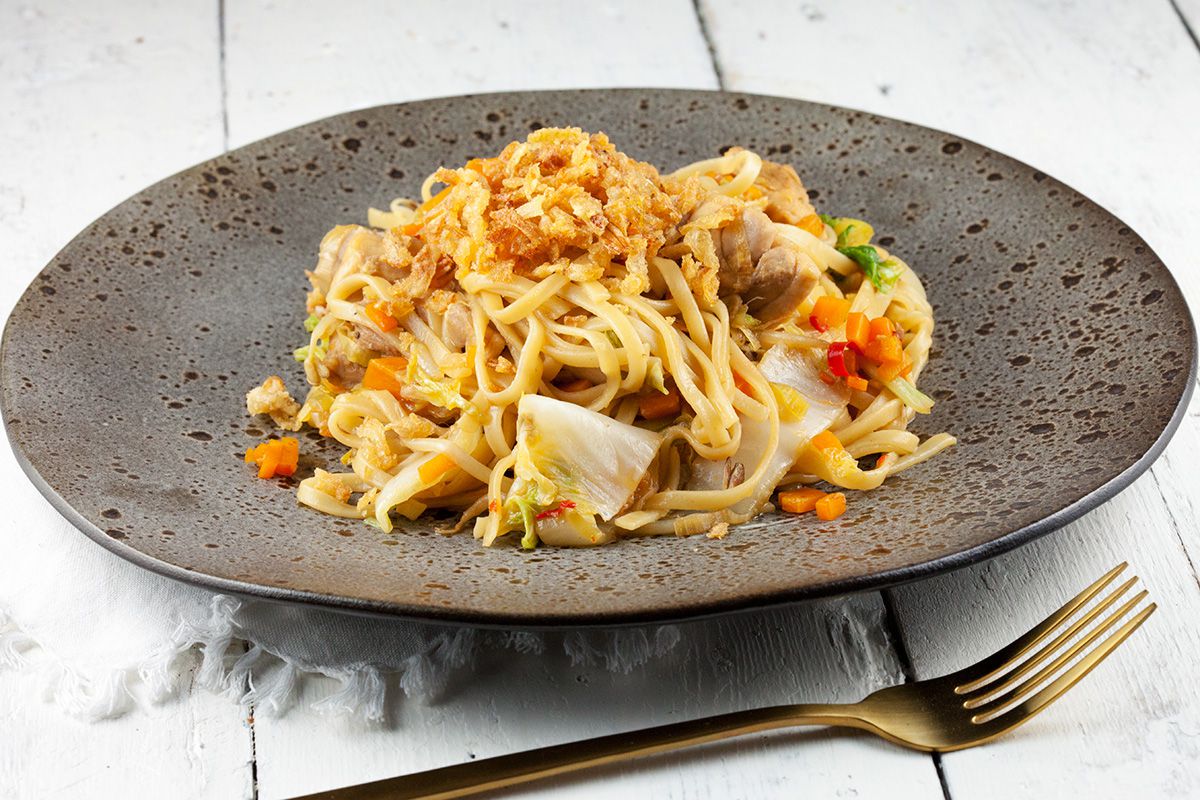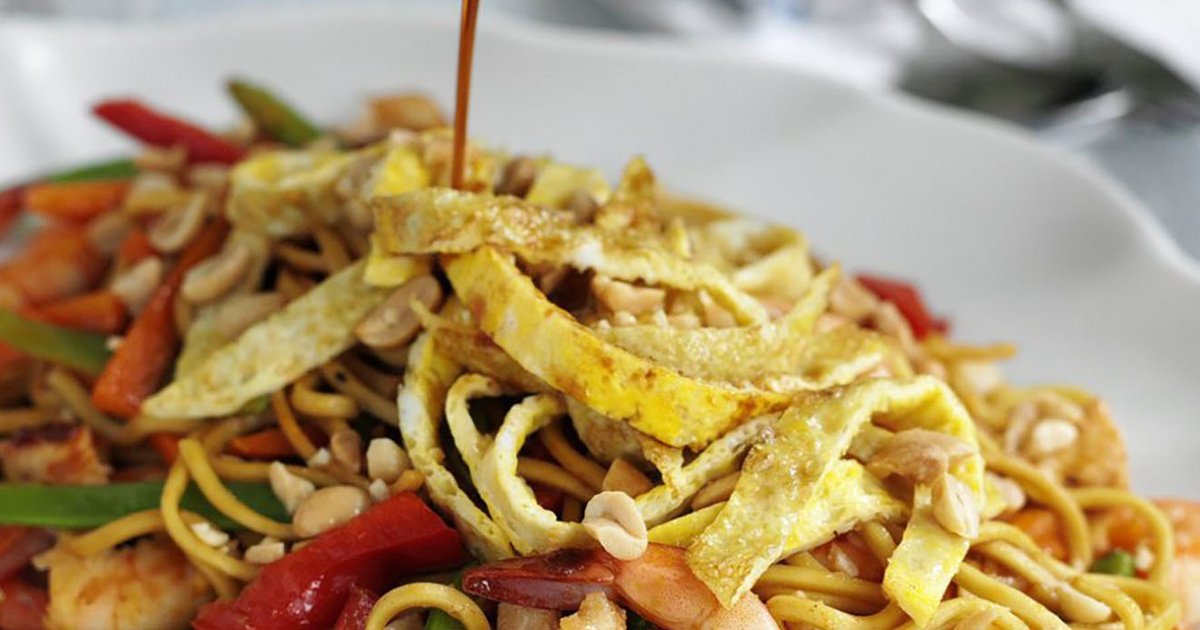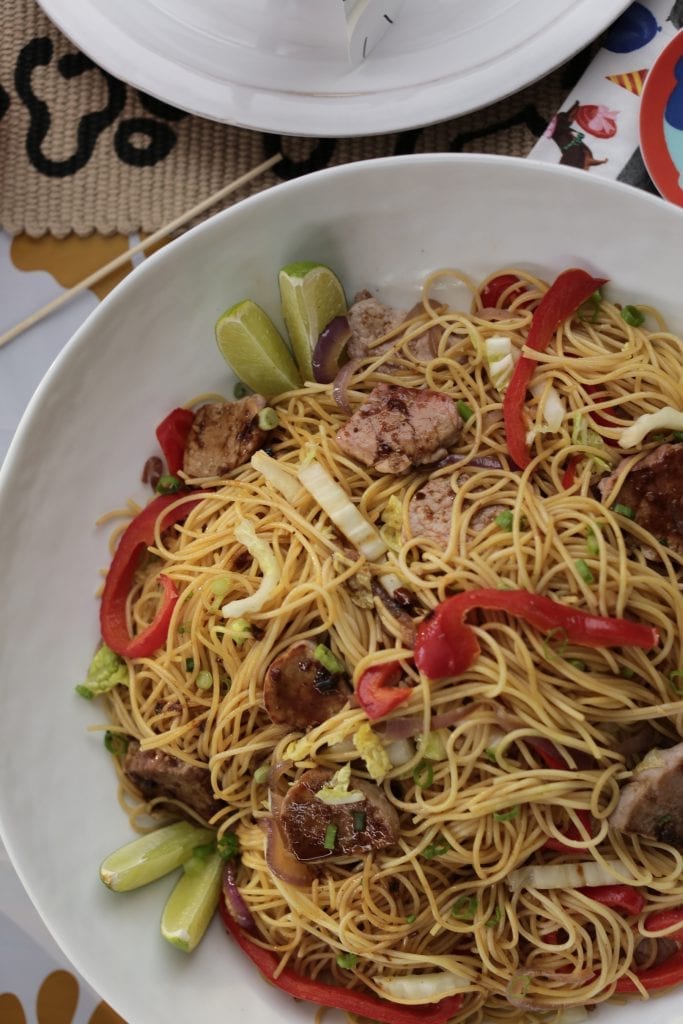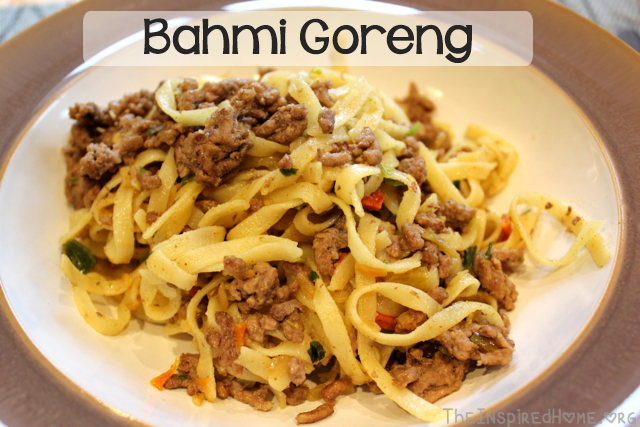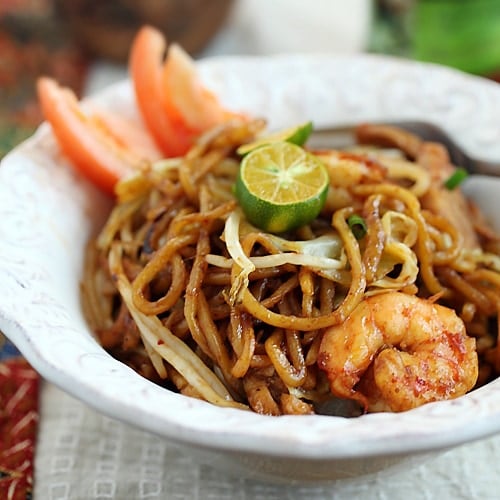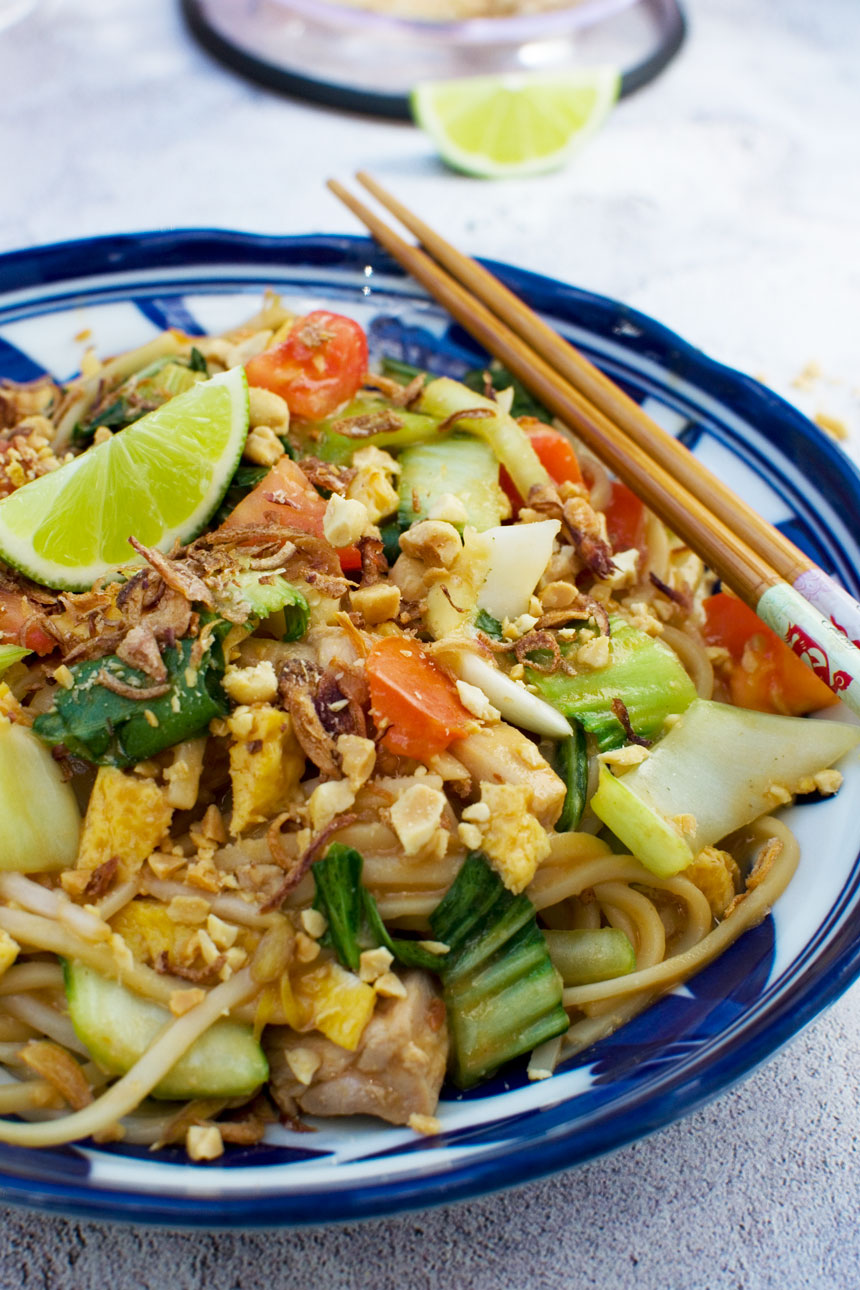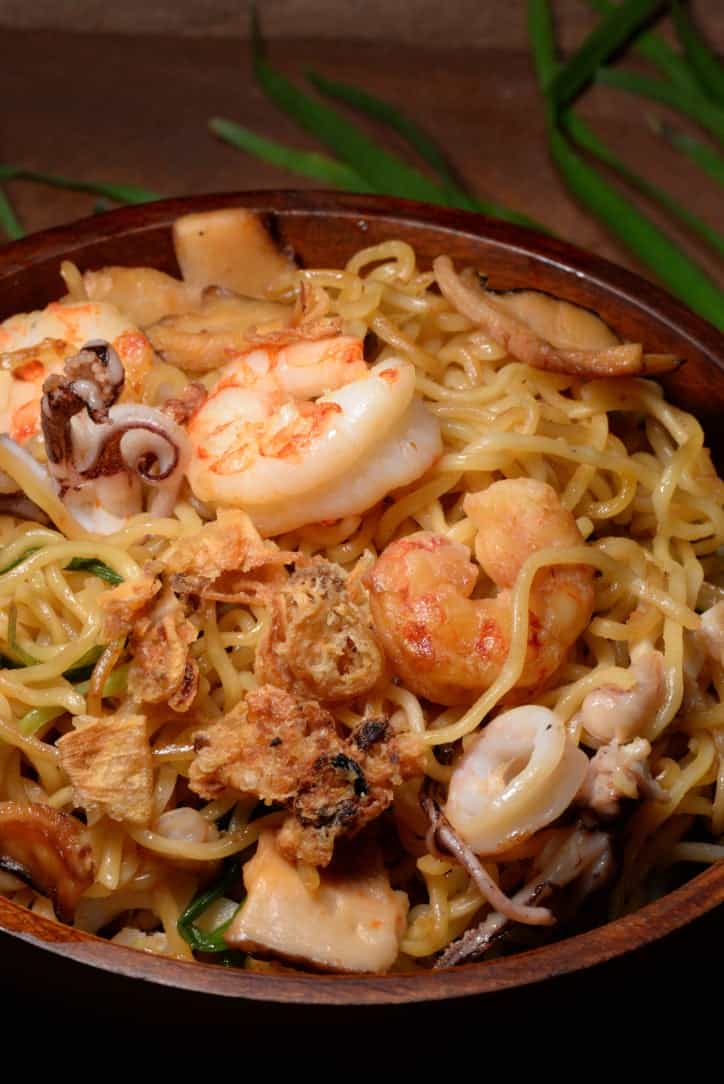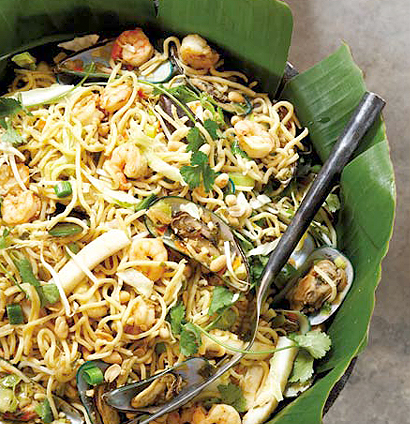Bami
bamie, mie goreng, bami goreng, bakmi goreng
Mie goreng , also known as bakmi goreng, is an Indonesian stir-fried noodle dish. It is made with thin yellow noodles stir-fried in cooking oil with garlic, onion or shallots, fried prawn, chicken, beef, or sliced bakso (meatballs), chili, Chinese cabbage, cabbages, tomatoes, egg, and other vegetables. Ubiquitous in Indonesia, it is sold by food vendors from street hawkers (warungs) to high-end restaurants. In Indonesia, where mi goreng is one of the most widespread simple dishes, the dish's origin is associated with Chinese Indonesian cuisine. Chinese influences are evident in Indonesian food such as bakmi, mi ayam, pangsit, bakso, lumpia, kwetiau goreng, and mi goreng. The dish is derived from Chinese chow mein and is believed to have been introduced by Chinese immigrants in Indonesia. Despite being influenced by Chinese cuisine, mi goreng in Indonesia has a definite Indonesian taste and has been heavily integrated into Indonesian cuisine, through, for example, the application of sweet soy sauce that adds mild sweetness, a sprinkle of fried shallots, and spicy sambal. Pork and lard are eschewed in favour of shrimp, chicken, or beef to cater to the Muslim majority. Mi goreng is traditionally made with yellow wheat noodles, stir-fried with chopped shallots, onion, and garlic with soy sauce seasoning, egg, vegetables, chicken, meat, or seafood. However, other versions might use dried instant noodles instead of fresh yellow wheat noodles. A common practice in Indonesia is the inclusion of powdered instant noodle seasonings, along with eggs and vegetables.
Source: Wikipedia
Recipes

